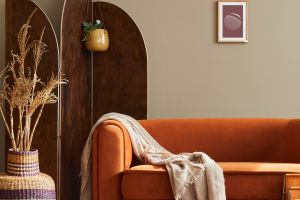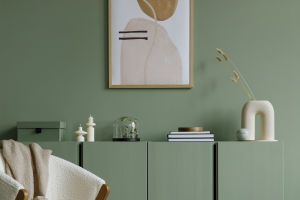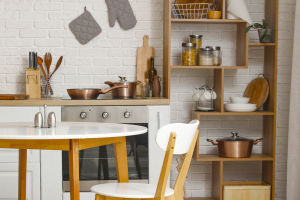
When it comes to home decor, the wall's soul is in the soft furnishings, and artwork is a popular choice for decoration. But how should we hang a painting? It may seem simple, but it's not always easy.
Hanging art the wrong way can ruin the whole aesthetic of the space. Let's take a look at some practical tips for hanging artwork that will help you elevate your space.
The first step in picking the right artwork is ensuring that it matches the overall style of your space. Consider the color, pattern, and material of the artwork. For instance, if your home has a Scandinavian theme, avoid traditional Chinese-style flower or bird paintings. Instead, opt for modern minimalist pieces that align with the theme.
Generally, the style of the artwork should match the design of the room. Mixing styles that clash too much may create a sense of dissonance. Additionally, artwork can help address gaps in interior design. For example, if your room feels too dark or dull, choosing a brighter painting can bring some life to the space.
What Are the Rules for Choosing Art?
Instead of recommending specific stores or paintings, let's focus on two basic rules you can follow when selecting artwork. These rules should help you find the perfect piece for your space.
Rule 1: Create Contrast with Complementary Colors
If you want your painting to become the focal point of the room, choose a piece with a color that complements the dominant tones of the surrounding space. Complementary colors are those that are opposite each other on the color wheel—think of green and red, or blue and orange. When these colors collide, they create a striking visual effect.
For instance, if the main color of your living room is blue, consider hanging a piece with shades of orange or red. This contrast will help the artwork stand out.
When to Go for Harmonious Colors?
If you're aiming for harmony, choose artwork with colors that match the overall tone of the space. This creates a more relaxed and cohesive vibe. For example, if the walls are in a warm terracotta hue, choose artwork with similar warm tones to maintain a sense of balance.
In this case, the artwork won't be the focal point. Instead, it should enrich the space without overwhelming it. The sofa, for instance, could become the standout piece, while the artwork blends in seamlessly with the rest of the room.
How to Match Art with Different Styles?
The style of your home plays a big role in selecting the right artwork. For example, in a classic European-style home, oil paintings are a great match. Don't skimp on quality—if you're investing in high-end furniture and decor, make sure the artwork complements that style.
For American-style interiors, especially traditional ones, pairing artwork with rich, full compositions like old maps or vintage photos works well. Meanwhile, for American country style, artwork featuring flowers or plants fits right in.
If you're decorating in Scandinavian style, abstract art, strong lines, and minimalist pieces will likely suit your space. Black-and-white artwork is also very common in Nordic interiors.
Likewise, Japanese-style interiors aren't as reliant on artwork, but when it is used, it's often subtle and in softer, lighter tones.
How to Hang Your Artwork?
The arrangement of your artwork is just as important as the piece itself. If you want to create a photo wall, there are many ways to arrange your pictures. However, we suggest going with an approach that feels more personal and less formulaic.
Balance and Asymmetry
When hanging multiple pieces, consider arranging them in a "mountain" shape, where the largest piece is in the center, and smaller pieces are arranged symmetrically on the sides. This creates balance, without being overly rigid.
Alternatively, if you want to create a "starry circle" effect, place one larger painting in the center and arrange smaller pieces around it.
How Many Pieces Should Go in a Bedroom?
For bedroom walls, it's better to keep the number of artworks to a minimum. A simpler setup is often more calming, which is ideal for a space where relaxation is the goal. A large central piece on one side of the bed, with two to four smaller pieces on the other side, keeps the space simple and elegant.
How to Choose the Right Frame?
The frame of your artwork also contributes to its overall appeal. If the piece's color is similar to that of the artwork, you might want to add a bit of white space between the picture and the frame to help it stand out.
The material of the frame should align with the room's style. For example, if you have a classic European-style room, a carved wooden or metallic frame would work best. For more modern decor, acrylic or minimal metal frames suit the space better.
Conclusion
When hanging artwork in your home, the key is to choose pieces that complement your space's overall aesthetic. Whether you're creating a focal point with contrasting colors or blending artwork harmoniously with the room's decor, the right artwork can transform a room. So, don't just hang anything—think about how your art interacts with the rest of your home, and let it elevate your space.


